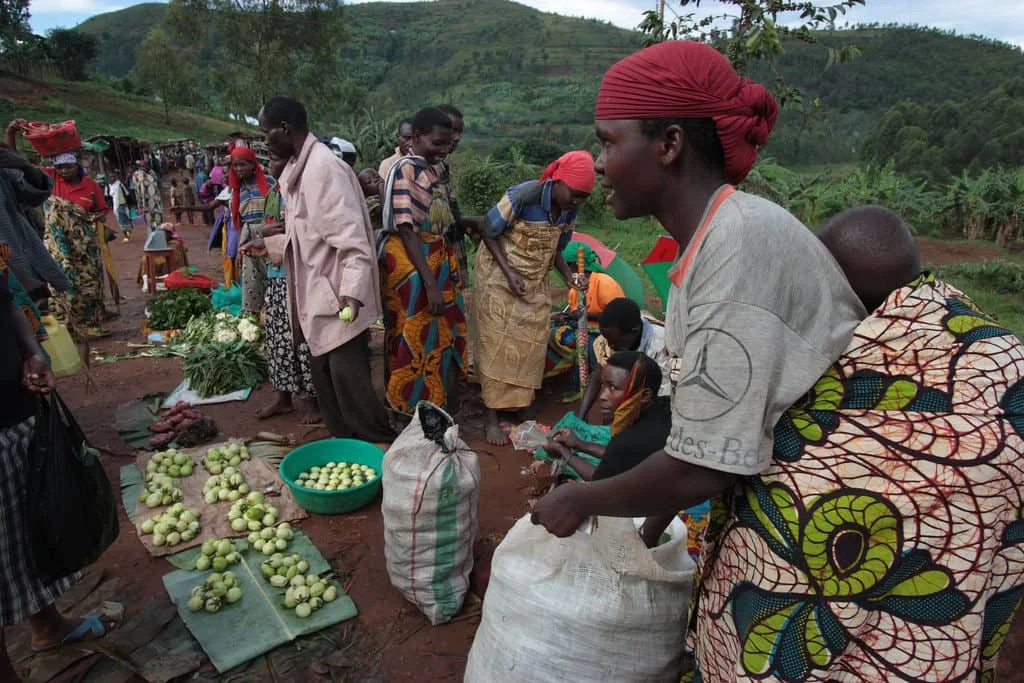Take Me to the Burundian Recipes
Burundian cuisine is a vibrant and flavorful reflection of the country’s agricultural heritage and cultural history. Nestled in the heart of Africa, Burundi is a land of rolling hills and scenic highlands with a typically tropical highland climate.
The small, landlocked nation borders Rwanda to the north, Tanzania to the east and south, and the Democratic Republic of Congo to the west. Lake Tanganyika lies along its southwestern border. This beautiful country, although among the ten poorest in the world, boasts lush scenery and a dense population and an exciting cuisine that is worth exploring.
Burundi is approximately 27,000 square kilometers, just a bit larger than the state of Massachusetts. It’s inhabited by around 11 million people, making it the second most densely populated country after Rwanda. Every part of the country serves a purpose, with 600 square kilometers covered by natural, untouched forest. The remaining land is almost entirely dedicated to farming.
Burundian cuisine reflects the produce of the fertile lands and the freshwater bounty of Lake Tanganyika.
Burundian Cuisine – Key Takeaways
- Burundian cuisine primarily features traditional African staples such as beans, plantains, and cassava.
- The use of fresh, locally sourced ingredients is central to Burundian cooking practices.
- Key national dishes include Red Kidney Beans in Palm Oil and Boko Boko Harees.
- Burundian food is a communal feast, reflecting the country’s strong sense of community and tradition.
- Meals in Burundi have a starch base like ugali (cornmeal porridge) or plantains.
- The cuisine has been influenced by the country’s history, including colonization and trade routes.
Take Me to the Burundian Recipes
More Interesting Articles
- North and South American Cuisine – A Culinary Expedition
- European Cuisine: Savor the Continent’s Best Culinary Secrets!
- African Cuisine: Discover the Bold Flavors & Global Charm!
- Asian Cuisine Unlock its Secrets – Taste, Health & Global Influence!
- Oceania Cooking: A Culinary Journey Through the Pacific
Where is Burundi?


Index of the Contents
- Take Me to the Burundian Recipes
- The History and the Effect It Has Had on the Burundian Cuisine
- Some Strange Facts About Burundi
- How Burundi’s Climate and Geography Have Influenced Burundian Food
- Understanding the Essence of Burundian Cuisine
- What Are the most Popular Burundian Food Recipes
- How Healthy is Burundian Food?
- Burundian Culinary Traditions
- Exploring Burundi’s Ingredients
- Conclusion
- FAQ’s
Savor iconic Burundian Food Recipes – Click on each tantalizing picture to open up the Recipe


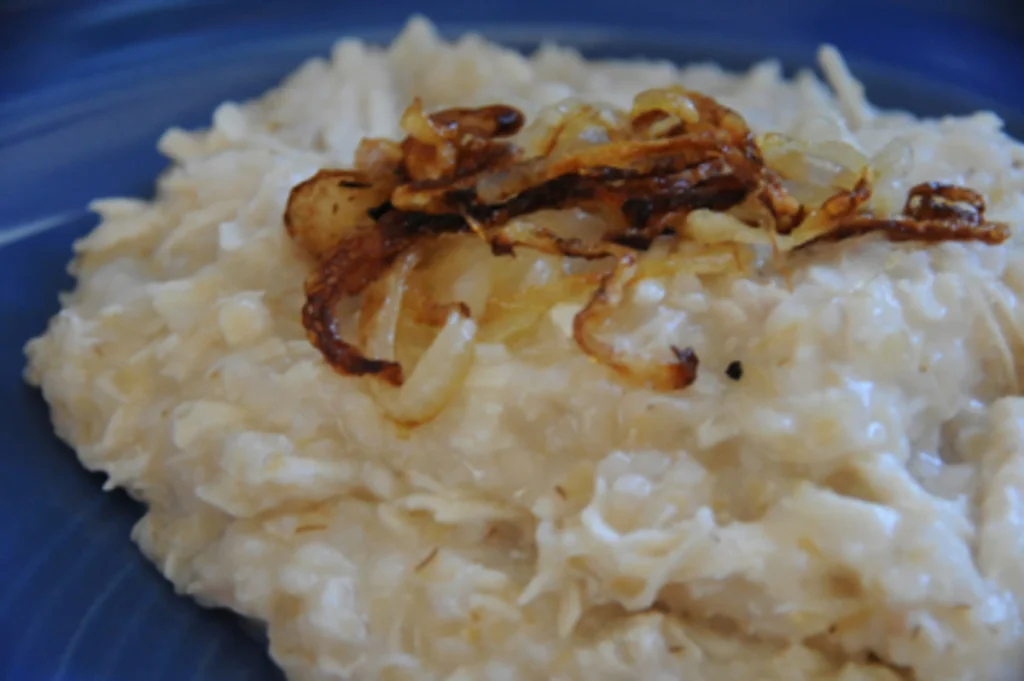










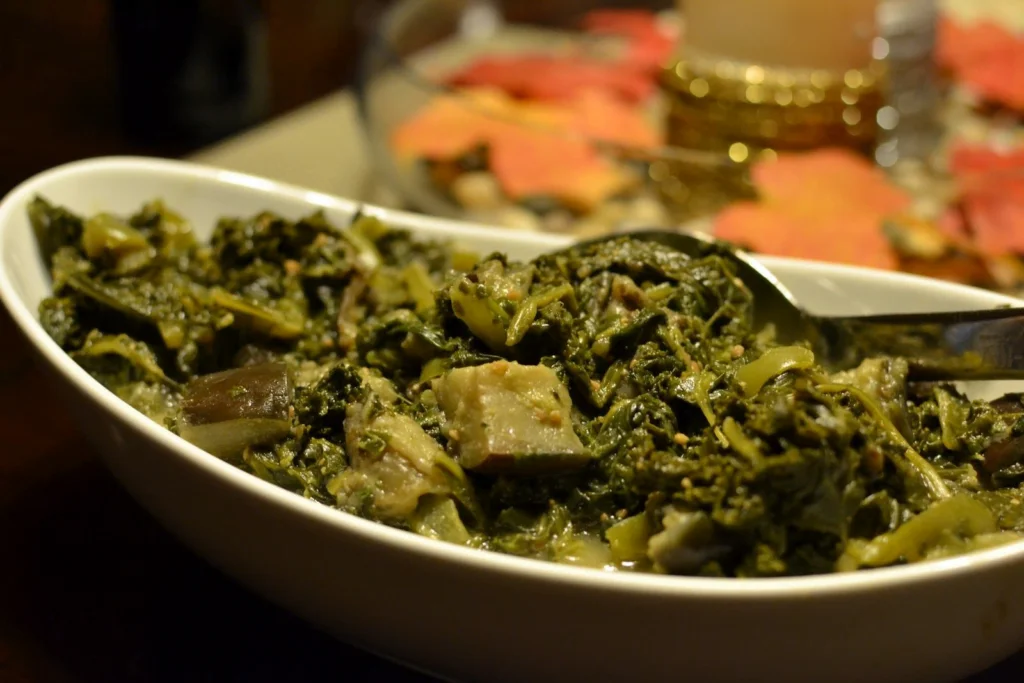

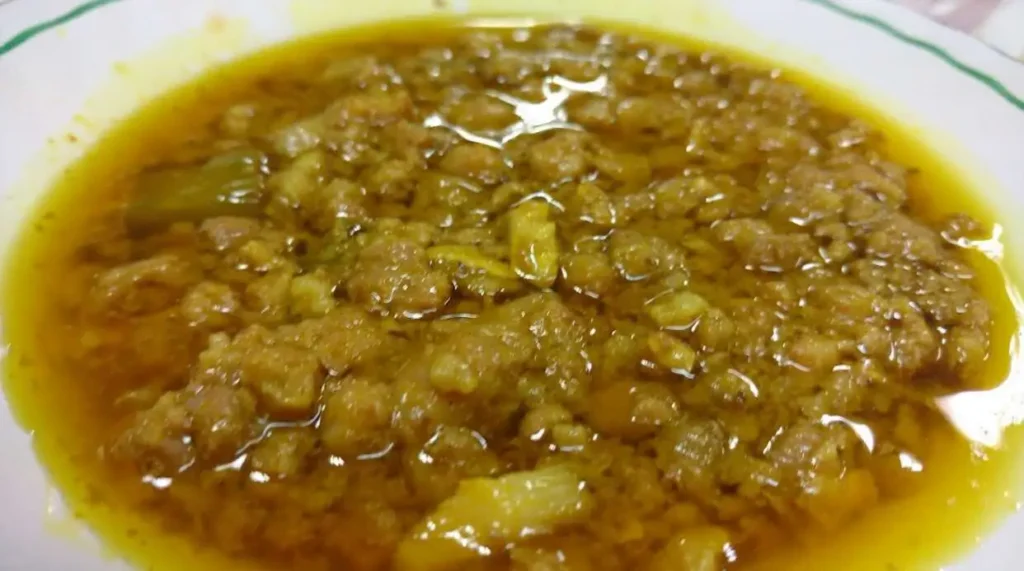

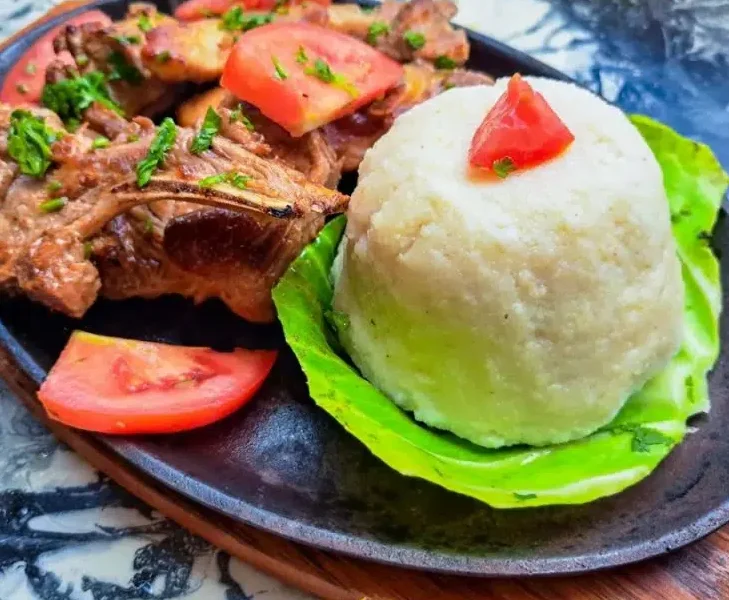




The History and the Effect It Has Had on the Burundian Cuisine

Here are some of the main steps of Burundi’s history and how they have influenced its cuisine:
Burundi is made up of three main groups of people (described in further detail below), called the Twa, the Tutsi, and the Hutu. These groups had lived in Burundi for about 500 years, but were independent for quite some time.
The Precolonial Period

Burundi was founded as a small kingdom by the Tutsi people in the 16th century, who expanded their territory and power over the next centuries. The Tutsi were mainly cattle herders, while the majority Hutu were farmers.
The Twa, a pygmy group, were hunters and gatherers. The three groups shared a common language, culture, and religion, but also had different social statuses and diets.
The Tutsi had more access to meat, milk, and butter, while the Hutu and Twa relied more on plant-based foods, such as beans, bananas, sweet potatoes, cassava, and maize. The traditional cooking method was the hāngī, an earth oven that used hot stones and leaves to cook food.
The Colonial Period
Burundi was colonized by Germany in the late 19th century, and then by Belgium after World War I. The colonial powers exploited the natural resources of Burundi, such as coffee, tea, and cotton, and also introduced new crops, such as potatoes, rice, and wheat.
They also imposed a racial divide between the Tutsi and Hutu, favoring the former and discriminating the latter. This created ethnic tensions and resentment that would later erupt into violence.
The colonial influence also affected the cuisine of Burundi, as new foods and spices were introduced, such as.
- Corned beef
- Mutton flaps
- Curry
- Ginger
- Garlic
- Chili
The Postcolonial Period

Burundi gained its independence from Belgium in 1962, but soon faced political instability, coups, and civil wars.
The ethnic conflict between the Tutsi and Hutu escalated into genocides in 1972 and 1993, killing hundreds of thousands of people and displacing millions more.
The country also suffered from poverty, hunger, and food insecurity, as the agricultural sector was disrupted by violence and climate change.
After a period of relative calm, Burundi experienced a resurgence of turmoil in 2015. President Domitien Ndayizeye’s pursuit of a third term, widely perceived as an unconstitutional endeavor, ignited a wave of anger and bloodshed.

Subsequently, over 380,000 individuals sought refuge by fleeing to neighboring Rwanda and Tanzania. Regrettably, Burundi is presently regarded as unsafe for external visitors.
The cuisine of Burundi became more diverse and influenced by other cultures, such as American, Chinese, Indian, and Thai, as refugees and immigrants brought new dishes and flavors.
However, the traditional foods and methods of cooking remained popular and important for the cultural identity and survival of the people.
Burundi’s cuisine is a reflection of its history, geography, and environment. It showcases the diversity and creativity of its people, as well as their adaptation and resilience to their challenges and circumstances.
References
Some Strange Facts About Burundi
The Country Presses “Pause” on Saturay Mornings
Every Saturday, from the early hours of 8 am to 11 am, it’s like a nationwide pause button in Burundi. People set aside their regular tasks to jump into community-enhancing activities. Picture this: planting fruit trees along the streets, doing a trash treasure hunt, and giving hospitals a good scrub. It’s all part of the fun and fellowship of Ibikorwa rusangi, a time to promote good vibes and friendships across cultures.
Cows are Sacred In Burundi
Now, let’s talk about cows. In Burundi, they’re not just your regular moo-makers. Cows, especially their horns, are like the VIPs of the animal kingdom. When a Burundian stumbles upon a set of cow horns, it’s not a random find – it’s a blessing planting ceremony. It’s their way of saying thanks to the cow for providing that delicious meat on their plates.
Students Learn Three Langauages in School
Burundi is a language-learning paradise. In school, most citizens become linguistic whizzes, picking up not one, not two, but four languages. That’s like having a linguistic toolbox ready for any conversation surprise!
- French
- Kirundi
- Swahili
A Burundian Athlets has Won and Olympic Gold Medal

Here’s a blast from the past: in 1996, Vénuste Niyongabo sprinted his way into Burundi’s history books. He snagged the country’s first Olympic gold medal, making Burundi the coolest (and poorest) country to ever win such a shiny prize. And get this – he did it in the 5,000-meter race, making us all want to lace up our sneakers.
Burundian’s are Not Allowed to Run in Groups!
But, there’s a plot twist! Despite the Olympic victory dance, group jogging got the boot in 2014. The president thought people might use their jogging time for some less-than-sporty planning, like plotting anti-governmental activities.
So, no more group jog-a-thons – Burundi keeps its sneakers laced up and politics separate!
How Burundi’s Climate and Geography Have Influenced Burundian Cuisine

Burundi’s climate and geography have influenced its cuisine in various ways. Here are some examples:
Burundi has a Tropical Climate
The country has a tropical climate, with high temperatures and humidity throughout the year. This means that food preservation is difficult, and people tend to consume fresh or cooked food rather than stored or processed food.
Natural Disasters
The country is also prone to natural disasters, such as volcanic eruptions, earthquakes, tsunamis, landslides, and floods, which can affect food security and availability.
The population has had to adapt to these challenges by using local and seasonal ingredients, diversifying their food sources, and developing coping strategies.
Burundi has a Diverse Geography

The country has a diverse geography, with mountains, valleys, rivers, lakes, islands, and coasts. This creates different ecological zones and microclimates, which support a variety of flora and fauna.
People have access to different types of food depending on their location and elevation, such as root crops, fruits, nuts, vegetables, grains, fish, shellfish, seaweed, meat, and game.
The country’s geography also influences the methods of food preparation and cooking. For example, in the coastal regions, people use coconut milk and cream as cooking mediums and flavor enhancers, while in the highlands, people use a traditional earth oven called hāngī to cook pork and vegetables.
Burundi’s cuisine is a reflection of its climate and geography, as well as its history, culture, and identity. It showcases the diversity and creativity of its people, as well as their adaptation and resilience to their environment and circumstances.
References
Understanding the Essence of Burundian Cuisine
The essence of Burundian cuisine lies in its simplicity and reliance on fresh, organic produce. The traditional diet is largely vegetarian, due to economic constraints and lifestyle choices, with an emphasis on legumes, root vegetables, and green leafy vegetables.
Animal protein is considered a luxury and is usually reserved for special occasions. Burundian meals are typically flavored with natural herbs and spices, eschewing the heavy use of artificial additives or processed ingredients, which results in food that is both wholesome and nutritious.
What Are the most Popular Burundian Food Recipes
Burundian food is a mix of traditional and modern influences, with a strong emphasis on plant-based foods, such as beans, bananas, cassava, and maize. Some of the most popular Burundian food recipes are:
Burundian Food Agatoke
This is a dish made from mashed plantains mixed with various vegetables, such as amaranth, leeks, onion, eggplant, garlic, celery, tomatoes, and green pepper. It is often served with spiced meats or fish.
Burundian Food Renga Renga
This is a spinach stew with a strong taste, made with green onions, tomatoes, mint, black pepper, palm oil, and salt. It can also include dried minced fish meat for extra flavor.
Burundian Food Uburobe
This is a cassava bread, made from cassava flour and water, rolled up in banana leaves. It goes well with meat soup, beans, or avocado. It can be stored for a long time without spoiling
Burundian Food Kolkas
This is a taro root stew, made with garlic, cilantro, green sauce, taro, and homemade broth. It is a delicious and hearty dish that originated in Egypt.
Burundian Food Burundi Beans and Bananas
This is a simple and satisfying dish, made with beans, bananas, onion, garlic, tomato paste, and spices. It is both sweet and savory, and can be eaten with chapati bread and Burundi slaw.
How Healthy is Burundian Food?

The population of Burundi is not very healthy, as it faces many health challenges related to poverty, malnutrition, diseases, and lack of access to basic services.
According to the World Health Organization, the life expectancy at birth in Burundi is 63.8 years, which is below the global average of 73.3 years. The under-five mortality rate is 53 per 1,000 live births, which is above the global average of 38 per 1,000 live births.
The main causes of death for children under five are neonatal conditions, lower respiratory infections, diarrhoeal diseases, and malaria.
The food in Burundi is mainly based on plant-based foods, such as beans, bananas, sweet potatoes, cassava, and maize, which provide carbohydrates and energy.
However, these foods are low in micronutrients, such as iron, vitamin A, and iodine, which are essential for growth and development. The consumption of animal-based foods, such as meat, milk, and eggs, is limited by availability and affordability.
The intake of fruits and vegetables, which are rich in vitamins and minerals, is also low. As a result, more than half of the children under five are stunted, and many women and children suffer from anaemia and other micronutrient deficiencies.
To improve the health and nutrition of the population, the government of Burundi and its partners, such as UNICEF and WFP, are implementing various interventions, such as promoting exclusive breastfeeding, providing micronutrient supplements, treating acute malnutrition, and supporting local food production and consumption.
However, more efforts are needed to address the root causes of poverty, food insecurity, and poor hygiene and sanitation.
References
Burundian Culinary Traditions
Culinary traditions in Burundi are deeply interwoven with the country’s cultural rituals and daily life. The process of growing, harvesting, and preparing food is a communal activity that strengthens social bonds.
Meals are often cooked in large pots over wood fires, and people come together to share food, stories, and camaraderie. This communal approach extends to the way food is eaten — often with hands, around a shared platter, reflecting a sense of unity and equality.
Exploring Burundi’s Ingredients: The Flavors of Burundian Cuisine
The flavors of Burundian cuisine are as varied as its landscape. Staples like beans, corn, and cassava are the blank canvas upon which the palette of Burundian flavors is painted.
Freshwater fish from Lake Tanganyika, goat meat, and locally grown fruits like papayas, avocados, and pineapples add to the diversity.
The use of palm oil in cooking introduces a distinctive richness, while the addition of East African spices contributes a subtle complexity to the cuisine’s flavor profile.
Burundi National Dish
There are three recipes that are considered the national dish of Burundi
- “Matoke“, which is a popular staple food made from mashed green bananas. It is typically served with a variety of stews and sauces, such as beans, meat, or vegetables. Matoke is a significant part of Burundi’s culinary heritage and enjoyed by locals and visitors alike.
- Red Kidney Beans in Palm Oil is also considered a national dish, commonly eaten throughout the country.
- Boko Boko Harees is made with a combination of chicken breasts, bulgur wheat, onions, chicken giblets, ginger, turmeric, cardamom, sugar, ghee, and black pepper.
Burundian Cuisine – Great Recipes to Try at Home
Burundian cuisine is a delightful exploration of tastes and textures, with each dish offering a glimpse into the nation’s heart and soul. It is hearty and filling, often centered around a starch base complemented by a flavorful stew or sauce.
Despite the simplicity of the ingredients, Burundian dishes can be deeply complex in flavor, achieved through traditional cooking methods that have been passed down through generations.
Burundian Food – Agatoke

This is a dish made from mashed plantains mixed with various vegetables, such as amaranth, leeks, onion, eggplant, garlic, celery, tomatoes, and green pepper. It is often served with spiced meats or fish.
History and Background of Agatoke
Agatoke is a traditional dish originating from Burundi. This flavorful dish reflects Burundi’s rich cultural heritage and agricultural abundance. Agatoke is a staple in Burundian cuisine, celebrated for its simplicity and reliance on locally sourced ingredients.
Rooted in the vibrant traditions of the region, Agatoke exemplifies the Burundian spirit of community and shared meals, making it an integral part of social gatherings and festive occasions.
Ingredients for Agatoke
For the Banana Mash:
- 6-8 ripe bananas
- 1/4 cup palm oil (or vegetable oil)
- Salt to taste
For the Accompaniments:
- Cooked kidney beans
- Finely chopped onions
- Finely chopped tomatoes
- Freshly chopped cilantro
- Salt and pepper to taste
Estimated Cooking Time: 30 minutes
Servings: 4-6
Recipe for Agatoke
1. Prepare Banana Mash
- Peel the ripe bananas and place them in a large bowl.
- Mash the bananas until smooth using a fork or a potato masher.
- In a pan, heat palm oil (or vegetable oil) over medium heat.
- Add the mashed bananas to the heated oil, stirring continuously.
- Cook the banana mash for about 10-15 minutes until it thickens.
- Season with salt to taste and continue stirring until well combined.
2. Prepare Accompaniments
- In separate bowls, set out cooked kidney beans, finely chopped onions, finely chopped tomatoes, and freshly chopped cilantro.
- Season each accompaniment with salt and pepper to taste.
3. Serve Agatoke
- Spoon portions of the banana mash onto individual serving plates.
- Serve with accompaniments on the side, allowing each person to customize their Agatoke by adding kidney beans, onions, tomatoes, and cilantro as desired.
- Enjoy this traditional Rwandan dish as a communal meal, embracing the unique combination of sweet and savory flavors.
Calories per Serving: Approximately 200 calories
Agatoke represents the essence of Burundian cuisine, emphasizing the importance of community and the use of locally available ingredients. This dish captures the warmth and diversity of Rwandan culture, inviting people to gather and share in the joy of a simple yet flavorful meal.
Burundian Food – Isombe

Isombe is a dish made with cassava leaves. To prepare it, start by chopping the cassava leaves and then adding them to boiling, salted water. Let them boil for around two hours on high heat. In a separate step, chop other ingredients like bell pepper, zucchini, and eggplant. Fry them for a minute or two in a small amount of oil until they release their fragrance.
History and Background of Isombe
Isombe, a traditional Burundian dish, reflects the rich culinary heritage of the region. Originating from Burundi in East Africa, Isombe is deeply rooted in local traditions and flavors.
This dish showcases the country’s commitment to using indigenous ingredients and culinary techniques, creating a savory experience that holds cultural significance. Isombe is often enjoyed in gatherings and celebrations, emphasizing the communal spirit and the importance of sharing meals in Burundian culture.
Ingredients for Isombe
Sauce:
- 2 cups cassava leaves, finely chopped
- 1 cup peanuts, finely ground
- 1 cup palm oil
- 1 onion, finely chopped
- 2 tomatoes, diced
- 2 cloves garlic, minced
- 1 teaspoon ground crayfish (optional)
- Salt and pepper to taste
Protein (Choose One):
- 1 pound smoked fish, deboned and flaked
- 1 pound chicken, cooked and shredded
- 1 pound beef, cooked and shredded
Accompaniment:
- Cooked rice or plantains
Estimated Cooking Time: 1 hour
Servings: 4-6
Recipe for Isombe
1. Prepare the Sauce
- In a large pot, heat palm oil over medium heat.
- Add finely chopped onions and sauté until translucent.
- Stir in diced tomatoes and minced garlic, cooking until they soften.
- Add finely ground peanuts to the pot, mixing well.
- Incorporate chopped cassava leaves into the mixture.
- Season with ground crayfish (if using), salt, and pepper.
- Allow the sauce to simmer for about 30-40 minutes, stirring occasionally.
2. Add Protein
- Choose and add the preferred protein (smoked fish, chicken, or beef) to the simmering sauce.
- Stir the sauce with the protein until well combined.
- Let it cook for an additional 15-20 minutes, ensuring the protein is fully heated through.
3. Serve
- Adjust seasoning if necessary and serve Isombe hot over a bed of cooked rice or alongside cooked plantains.
Calories per Serving: Approximately 400-500 calories
Isombe encapsulates the flavors of Burundi, bringing together locally sourced ingredients and a variety of proteins. This dish symbolizes the cultural heritage and communal joy of sharing delicious meals, making it a cherished part of Burundian cuisine.
Burundian Food – Burundi Beans and Bananas

History and Background of Burundi Beans and Bananas
Burundi Beans and Bananas, a delightful dish originating from Burundi in East Africa, reflects the cultural diversity and agricultural abundance of the region. Rooted in traditional Burundian cuisine, this dish combines the earthy flavors of beans with the natural sweetness of bananas, creating a harmonious and nutritious meal.
It represents the resourcefulness of Burundian cooking, where locally grown ingredients are celebrated, and communal meals are a cherished part of daily life.
Ingredients for Burundi Beans and Bananas
Beans:
- 2 cups dried red kidney beans, soaked overnight
- 1 onion, finely chopped
- 2 tomatoes, diced
- 2 cloves garlic, minced
- 2 tablespoons vegetable oil
- 1 teaspoon ground cumin
- Salt and pepper to taste
Bananas:
- 4 ripe plantains or bananas
For the Accompaniment:
- Cooked rice or millet
Estimated Cooking Time: 2 hours
Servings: 4-6
Recipe for Burundi Beans and Bananas
1. Prepare the Beans
- In a large pot, heat vegetable oil over medium heat.
- Add finely chopped onions and sauté until translucent.
- Stir in diced tomatoes and minced garlic, cooking until they soften.
- Add soaked kidney beans to the pot, along with ground cumin, salt, and pepper.
- Pour enough water to cover the beans and bring to a boil.
- Reduce heat to simmer and cook for about 1.5-2 hours or until the beans are tender.
2. Prepare the Bananas
- Peel and slice the ripe plantains or bananas.
3. Serve
- Serve the cooked beans over a bed of rice or millet.
- Arrange the sliced bananas on the side of the beans.
- Enjoy the delightful combination of Burundi Beans and Bananas, savoring the flavors of this traditional dish.
Calories per Serving: Approximately 400-500 calories
Burundi Beans and Bananas capture the essence of Burundian cuisine, offering a balance of protein-rich beans and naturally sweet bananas. This dish embodies the spirit of community and resourceful cooking, making it a beloved and nourishing part of the culinary heritage in Burundi.
Burundian Food – Ibijumbu (Sweet Potatoes)

Sweet potatoes can be found in several different colors (such as yellow, red, and white) and in different varieties throughout the country.
They are heavily consumed during the dry season as the plant can survive long periods of drought. In Burundi, sweet potatoes are most commonly boiled and accompanied by beans or rice or grilled and served with spinach. They are packed with energy and fiber.
History and Background of Ibijumbu (Sweet Potatoes)
Ibijumbu, a beloved dish from Burundi in East Africa, reflects the rich agricultural landscape and cultural heritage of the region. Sweet potatoes, a staple in Burundian cuisine, hold historical significance as a versatile and nutritious ingredient.
Ibijumbu showcases the ingenuity of Burundian cooking, where simple yet flavorful preparations bring out the best in locally sourced produce. This dish embodies the connection between the Burundian people and their land, celebrating the abundance of sweet potatoes in a delicious and wholesome way.
Ingredients for Ibijumbu (Sweet Potatoes)
- 4 large sweet potatoes, peeled and sliced
- 2 tablespoons vegetable oil
- 1 onion, finely chopped
- 2 tomatoes, diced
- 2 cloves garlic, minced
- 1 teaspoon ground turmeric
- Salt and pepper to taste
Estimated Cooking Time: 45 minutes
Servings: 4-6
Recipe for Ibijumbu (Sweet Potatoes)
1. Prepare Sweet Potatoes
- Peel and slice the sweet potatoes into rounds.
2. Cook Sweet Potatoes
- In a large pan, heat vegetable oil over medium heat.
- Add finely chopped onions and sauté until translucent.
- Stir in minced garlic and diced tomatoes, cooking until they soften.
- Add the sliced sweet potatoes to the pan, ensuring they are coated with the onion and tomato mixture.
- Sprinkle ground turmeric over the sweet potatoes, and season with salt and pepper to taste.
- Cover the pan and let the sweet potatoes cook for approximately 30-40 minutes or until tender, stirring occasionally.
3. Serve
- Once the sweet potatoes are soft and cooked through, serve Ibijumbu hot.
- Enjoy the delicious blend of flavors and the nutritional goodness of sweet potatoes.
Calories per Serving: Approximately 150-200 calories
Ibijumbu (Sweet Potatoes) showcases the simplicity and wholesome nature of Burundian cuisine. This dish exemplifies the connection between the Burundian people and the land, with sweet potatoes taking center stage in a flavorful and culturally significant preparation.
Burundian Food – Amateke (taro root)

History and Background of Amateke (Taro Root)
Amateke, a traditional dish from Burundi in East Africa, highlights the historical and cultural significance of taro root in the region. Taro, known locally as Amateke, has been a staple in Burundian cuisine for generations.
This dish reflects the resourcefulness of Burundian cooking, where indigenous ingredients are celebrated for their versatility and nutritional value. Amateke showcases the connection between the Burundian people and the land, where taro root is cultivated and enjoyed in various culinary preparations.
Ingredients for Amateke (Taro Root)
- 4 cups taro root, peeled and diced
- 2 tablespoons vegetable oil
- 1 onion, finely chopped
- 2 tomatoes, diced
- 2 cloves garlic, minced
- 1 teaspoon ground coriander
- Salt and pepper to taste
Estimated Cooking Time: 45 minutes
Servings: 4-6
Recipe for Amateke (Taro Root)
1. Prepare Taro Root
- Peel and dice the taro root into bite-sized pieces.
2. Cook Taro Root
- In a large pan, heat vegetable oil over medium heat.
- Add finely chopped onions and sauté until translucent.
- Stir in minced garlic and diced tomatoes, cooking until they soften.
- Add the diced taro root to the pan, ensuring it’s coated with the onion and tomato mixture.
- Sprinkle ground coriander over the taro root, and season with salt and pepper to taste.
- Cover the pan and let the taro root cook for approximately 30-40 minutes or until tender, stirring occasionally.
3. Serve
- Once the taro root is soft and cooked through, serve Amateke hot.
- Enjoy the unique flavor and texture of taro root in this traditional Burundian dish.
Calories per Serving: Approximately 200-250 calories
Amateke (Taro Root) showcases the culinary heritage of Burundi, utilizing taro root in a simple yet flavorful preparation. This dish reflects the connection between the Burundian people, the land, and the nutritious bounty it provides.
Burundian Food – Uburobe

Uburobe, also known as ubuswage, is a dish made using cassava flour (sun-dried and crushed into a powder). To prepare it, a dough is made by mixing this flour with water, and then it is covered in banana leaves.
This dish can be enjoyed by itself or paired with meat soup, beans, or avocado. Uburobe is recognized for its affordability, and it can be stored for nearly a month without needing refrigeration.
History and Background of Uburobe (Buruswage)
Uburobe, also known as ubuswage, is a traditional Burundian dish deeply rooted in the country’s rich history and cultural heritage. Originating from the heart of East Africa, Burundi, this dish reflects the resourcefulness of Burundian cuisine, utilizing locally sourced ingredients to create a flavorful and nourishing meal.
Uburobe has been a staple in Burundian households, showcasing the culinary traditions that have been passed down through generations.
Ingredients for Uburobe (Buruswage)
- 2 cups dried beans (commonly kidney beans or black-eyed peas), soaked overnight
- 2 cups corn kernels
- 2 tablespoons vegetable oil
- 1 onion, finely chopped
- 2 tomatoes, diced
- 2 cloves garlic, minced
- 1 teaspoon ground cumin
- Salt and pepper to taste
Estimated Cooking Time: 2 hours
Servings: 4-6
Recipe for Uburobe (Buruswage)
1. Prepare Beans and Corn
- Soak dried beans overnight and drain.
- In a large pot, combine soaked beans and corn kernels, covering with water.
- Bring the mixture to a boil and then simmer for approximately 1.5-2 hours until beans are tender.
2. Prepare Onion and Tomatoes
- In a separate pan, heat vegetable oil over medium heat.
- Add finely chopped onions and sauté until translucent.
- Stir in minced garlic and diced tomatoes, cooking until softened.
3. Combine and Season
- Add the onion and tomato mixture to the cooked beans and corn.
- Season the dish with ground cumin, salt, and pepper.
4. Simmer
- Let the combined ingredients simmer for an additional 20-30 minutes to allow flavors to meld.
5. Serve
- Serve Uburobe hot, either on its own or with a side of rice or plantains.
Calories per Serving: Approximately 300-400 calories
Uburobe (Buruswage) encapsulates the essence of Burundian cuisine, emphasizing the use of beans and corn as staple ingredients. This wholesome dish not only reflects the cultural history of Burundi but also provides a nutritious and satisfying meal for those who enjoy it.
Burundian Food – Renga Renga (Potato Leaf and Peanut Stew)

History and Background of Renga Renga (Potato Leaf and Peanut Stew)
Renga Renga, a flavorful dish hailing from Burundi in East Africa, showcases the culinary traditions deeply embedded in the region’s history. This stew exemplifies the resourcefulness of Burundian cooking, utilizing locally abundant ingredients like potato leaves and peanuts.
As a staple in Burundian households, Renga Renga reflects the cultural connection between the people and the land, where the cultivation of potatoes and peanuts has been an integral part of the country’s agricultural practices.
Ingredients for Renga Renga (Potato Leaf and Peanut Stew)
- 2 cups fresh potato leaves, washed and chopped
- 1 cup roasted peanuts, ground into a paste
- 2 tablespoons vegetable oil
- 1 onion, finely chopped
- 2 tomatoes, diced
- 2 cloves garlic, minced
- 1 teaspoon ground coriander
- Salt and pepper to taste
Estimated Cooking Time: 45 minutes
Servings: 4-6
Recipe for Renga Renga (Potato Leaf and Peanut Stew)
1. Prepare Potato Leaves and Peanuts
- Wash and chop fresh potato leaves.
- Roast peanuts and grind them into a paste.
2. Cook Onion and Tomatoes
- In a large pot, heat vegetable oil over medium heat.
- Add finely chopped onions and sauté until translucent.
- Stir in minced garlic and diced tomatoes, cooking until they soften.
3. Add Potato Leaves and Peanuts
- Incorporate chopped potato leaves into the pot and let them wilt.
- Add the ground peanut paste to the mixture.
- Stir in ground coriander, salt, and pepper.
4. Simmer
- Allow the stew to simmer for approximately 30 minutes, ensuring flavors meld.
5. Serve
- Serve Renga Renga hot, either alone or with a side of rice.
Calories per Serving: Approximately 300-400 calories
Renga Renga, a delightful Potato Leaf and Peanut Stew, not only pays homage to Burundi’s agricultural abundance but also offers a nutritious and flavorful dish that has stood the test of time.
Burundian Food – Indagala

These little fish discovered in Lake Tanganyika are incredibly tasty and an excellent protein source. Packed with iron, they are highly appreciated for the distinct flavor they add to any dish.
History and Background of Indagala
Indagala is a traditional dish rooted in the culinary heritage of Burundi, a small East African country with a rich cultural tapestry. This dish reflects the resourcefulness of Burundian cooking, emphasizing locally sourced ingredients and traditional cooking methods.
Indagala showcases the deep connection between the people of Burundi and the agricultural practices that have shaped their cuisine over generations.
Ingredients for Indagala
- 2 cups dried fish (preferably small fish from Lake Tanganyika)
- 2 cups cornmeal
- 1 onion, finely chopped
- 2 tomatoes, diced
- 2 cloves garlic, minced
- 2 tablespoons vegetable oil
- Salt and pepper to taste
Estimated Cooking Time: 1 hour
Servings: 4-6
Recipe for Indagala
1. Prepare Dried Fish
- Clean and soak the dried fish in water for about 30 minutes to rehydrate.
- Remove any bones and chop the fish into smaller pieces.
2. Cook Onion and Tomatoes
- In a large pot, heat vegetable oil over medium heat.
- Add finely chopped onions and sauté until translucent.
- Stir in minced garlic and diced tomatoes, cooking until softened.
3. Add Dried Fish
- Incorporate the chopped dried fish into the pot.
- Season with salt and pepper according to taste.
4. Prepare Cornmeal
- In a separate pot, bring water to a boil.
- Slowly add cornmeal to the boiling water, stirring continuously to avoid lumps.
- Continue stirring until the cornmeal thickens into a smooth consistency.
5. Combine and Simmer
- Mix the prepared cornmeal with the cooked fish, onions, and tomatoes.
- Allow the mixture to simmer for about 30-40 minutes, ensuring it thickens and flavors meld.
6. Serve
- Serve Indagala hot, either on its own or accompanied by a side of vegetables or salad.
Calories per Serving: Approximately 300-400 calories
Indagala, a dish that embodies the flavors of Burundi, brings together dried fish and cornmeal in a harmonious blend, providing a taste of the country’s culinary traditions.
Burundian Food – Umukeke

This fish is exclusive to Lake Tanganyika, the second-deepest lake globally, following Lake Baikal. It’s considered the most opulent traditional food but is regrettably becoming scarcer and pricier. Privatizing fishing areas has led to its exclusivity for the wealthy.
Umukeke can be prepared by roasting, grilling, or boiling, depending on personal preference.
History and Background of Umukeke
Umukeke is a traditional Burundian dish deeply embedded in the culinary history of the region. Originating from the heart of East Africa, Burundi, this dish reflects the cultural practices and local flavors that have been passed down through generations.
Umukeke highlights the simplicity and resourcefulness of Burundian cuisine, often utilizing readily available ingredients to create a delightful and nourishing meal.
Ingredients for Umukeke
- 2 cups sorghum flour
- 1 cup cassava flour
- 4 cups water
- Banana leaves for wrapping
- Salt to taste
Estimated Cooking Time: 30 minutes
Servings: 4-6
Recipe for Umukeke
1. Prepare Sorghum and Cassava Flour
- In a large mixing bowl, combine sorghum flour and cassava flour.
- Gradually add water to the mixture, stirring continuously to avoid lumps.
- Add salt to taste and ensure a smooth consistency.
2. Wrap in Banana Leaves
- Cut banana leaves into square pieces.
- Spoon the prepared flour mixture onto the center of each banana leaf square.
- Fold the banana leaves to encase the flour mixture, creating a secure parcel.
3. Steam
- Place the wrapped parcels in a steamer.
- Steam for approximately 30 minutes until the Umukeke is firm and cooked through.
4. Serve
- Unwrap the banana leaves and serve Umukeke hot.
- Enjoy Umukeke on its own or pair it with a side dish of vegetables or meat.
Calories per Serving: Approximately 200-300 calories
Umukeke, a dish that embodies the essence of Burundian culinary heritage, showcases the use of sorghum and cassava flour, wrapped in banana leaves and steamed to perfection. This simple yet satisfying dish is a testament to the rich cultural traditions of Burundi.
Burundian Food – Ubugali

Ugali is a kind of thick porridge made from maize flour (corn flour). It’s a widely enjoyed food in Sub-Saharan Africa, and Burundi is no different.
This dough can be prepared using various plants like sorghum, cassava, and more, but the most common version is made with maize. This dish is highly valued, especially by those who can’t afford three meals a day, as it provides a substantial energy boost.
History and Background of Ubugali
Ubugali, a staple in Burundian cuisine, has a rich history deeply rooted in the cultural fabric of East Africa. Originating from Burundi, this dish reflects the resourcefulness of the region, utilizing locally abundant ingredients.
Ubugali is a versatile and comforting food that has been a dietary cornerstone for generations, showcasing the connection between the people and the agricultural practices that shape their culinary traditions.
Ingredients for Ubugali
- 2 cups maize flour
- Water for boiling
- Salt to taste
Estimated Cooking Time: 20-30 minutes
Servings: 4-6
Recipe for Ubugali
1. Boil Water
- In a large pot, bring water to a boil.
2. Mix Maize Flour
- Gradually add maize flour to the boiling water, stirring continuously.
- Ensure there are no lumps in the mixture.
3. Cook Ubugali
- Continue stirring and cooking the mixture over medium heat until it thickens.
- Reduce the heat and cover the pot, allowing the mixture to steam for about 10-15 minutes.
4. Form Ubugali
- Uncover the pot and stir the mixture, ensuring a smooth consistency.
- Wet your hands with water and shape the mixture into a round, firm ball.
5. Serve
- Serve Ubugali hot.
- Ubugali can be enjoyed with a variety of stews, vegetables, or meats.
Calories per Serving: Approximately 200-300 calories
Ubugali, a testament to the resilience of Burundian culinary traditions, is a simple yet nourishing dish that has stood the test of time. Its cultural significance and versatility make it a cherished part of the Burundian dining experience.
Burundian Food – Elephant Soup

History and Background of Elephant Soup
Elephant Soup is a traditional dish that finds its roots in Burundi, a country in East Africa. This flavorful soup is a cultural staple, reflecting the culinary traditions of the region.
The name “Elephant Soup” carries historical significance, possibly inspired by the local flora and fauna, showcasing the connection between the people and their natural surroundings.
Ingredients for Elephant Soup
- 1 lb beef stew meat, cubed
- 2 tablespoons vegetable oil
- 1 onion, finely chopped
- 2 tomatoes, diced
- 3 carrots, sliced
- 2 potatoes, diced
- 1 cup green beans, chopped
- 1 cup cabbage, shredded
- 1 cup rice
- Salt and pepper to taste
- 8 cups water
- 2 tablespoons tomato paste
- 2 cloves garlic, minced
- 1 teaspoon thyme
Estimated Cooking Time: 1.5 to 2 hours
Servings: 6-8
Recipe for Elephant Soup
1. Prepare Meat and Vegetables
- In a large pot, heat vegetable oil over medium heat.
- Add cubed beef stew meat and brown on all sides.
- Add chopped onions and minced garlic. Cook until onions are translucent.
2. Add Vegetables
- Stir in diced tomatoes, sliced carrots, diced potatoes, chopped green beans, and shredded cabbage.
- Season with salt, pepper, and thyme.
- Cook for 5-7 minutes, allowing the vegetables to soften.
3. Simmer Soup
- Pour in water and bring the mixture to a boil.
- Reduce heat and simmer for 1 to 1.5 hours until the meat is tender.
4. Add Rice and Tomato Paste
- Stir in rice and tomato paste.
- Continue simmering until rice is cooked and the soup thickens.
5. Serve
- Adjust seasoning if needed and serve Elephant Soup hot.
Calories per Serving: Approximately 300-400 calories
Elephant Soup, a delightful blend of meat, vegetables, and rice, is a comforting dish that reflects the rich culinary heritage of Burundi. Enjoyed by many, this soup brings warmth and flavor to the dining tables of East Africa.
Burundian Food – Boko Boko

History and Background of Boko Boko
Boko Boko is a beloved dish originating from Burundi, a country in East Africa. This unique and flavorful recipe reflects the cultural heritage of the region, showcasing the creativity and resourcefulness of Burundian cuisine.
Boko Boko holds a special place in local gatherings and celebrations, bringing people together through its distinctive taste and communal preparation.
Ingredients for Boko Boko
- 2 cups cassava flour
- 1 cup cornmeal
- 1 cup sugar
- 1 cup grated coconut
- 1 cup milk
- 1/2 cup melted butter
- 1 teaspoon vanilla extract
- A pinch of salt
- Banana leaves for wrapping
Estimated Cooking Time: 1 to 1.5 hours
Servings: 8-10
Recipe for Boko Boko
1. Prepare Banana Leaves
- Wash banana leaves and cut them into squares.
- Pass the leaves over an open flame to make them pliable.
2. Mix Dry Ingredients
- In a large bowl, combine cassava flour, cornmeal, sugar, grated coconut, and a pinch of salt.
3. Add Wet Ingredients
- Gradually add milk, melted butter, and vanilla extract to the dry mixture.
- Mix thoroughly until a smooth batter forms.
4. Assemble and Wrap
- Place a spoonful of the batter in the center of a banana leaf square.
- Fold the leaf, creating a neat packet. Repeat for the remaining batter.
5. Steam Boko Boko
- Arrange the wrapped packets in a steamer.
- Steam for 45 minutes to 1 hour until the Boko Boko is firm and cooked through.
6. Serve
- Allow Boko Boko to cool before serving.
- Unwrap and enjoy this delightful Burundian treat.
Calories per Serving: Approximately 200-250 calories
Boko Boko, with its combination of cassava, coconut, and sweetness, captures the essence of Burundian culinary traditions. Sharing this dish is a cherished part of local gatherings, symbolizing unity and joy in the Burundian community.
Burundian Cuisine – Fritters of Lake Tanganyika (Fritures du Lac Tanganyika)

History and Background
This dish has its roots in the communities living around Lake Tanganyika, where fishing is a way of life. These fritters are typically served at the beginning of a meal or as a snack.
Ingredients for Fritters of Lake Tanganyika
- Fresh small fish from Lake Tanganyika, cleaned and descaled
- Lemon juice
- Salt and black pepper
- Garlic powder
- Flour for dusting
- Oil for frying
How to prepare Fritters of Lake Tanganyika
- Marinate the fish in lemon juice, salt, black pepper, and garlic powder.
- Dust the fish lightly with flour.
- Heat oil in a deep fryer or pan and fry the fish until golden and crispy.
Presentation and Serving
Serve these golden fritters on a platter with a side of spicy tomato sauce and lemon wedges. They are best enjoyed hot and crisp.
Matching Drinks
A cold local beer or a tangy tamarind juice would complement the freshness of the fish perfectly.
Burundian Cuisine – Cassava Leaves with Peanuts (Feuilles de Manioc à la Pâte d’Arachide)

History and Background
Cassava leaves are a common green in Burundian cooking, often ground into a paste and cooked with peanuts, providing a nutritious and flavorful starter.
Burundian Cuisine – Ingredients for Cassava Leaves with Peanuts
- Fresh cassava leaves, finely pounded or ground
- Roasted peanuts, ground into a paste
- Onions, finely chopped
- Palm oil
- Salt and vegetable stock
How to prepare Cassava Leaves with Peanuts
- In a pot, heat palm oil and sauté the onions until translucent.
- Add the cassava leaves and vegetable stock.
- Simmer until the leaves are tender.
- Stir in the peanut paste and continue cooking until the mixture thickens.
Presentation and Serving
Serve warm in small bowls as a rich and hearty precursor to the main meal.
Matching Drinks
A light, fruity drink, such as a banana or papaya smoothie, would offer a sweet contrast to the savory starter.
Burundi National Dish – Boko Boko Harees
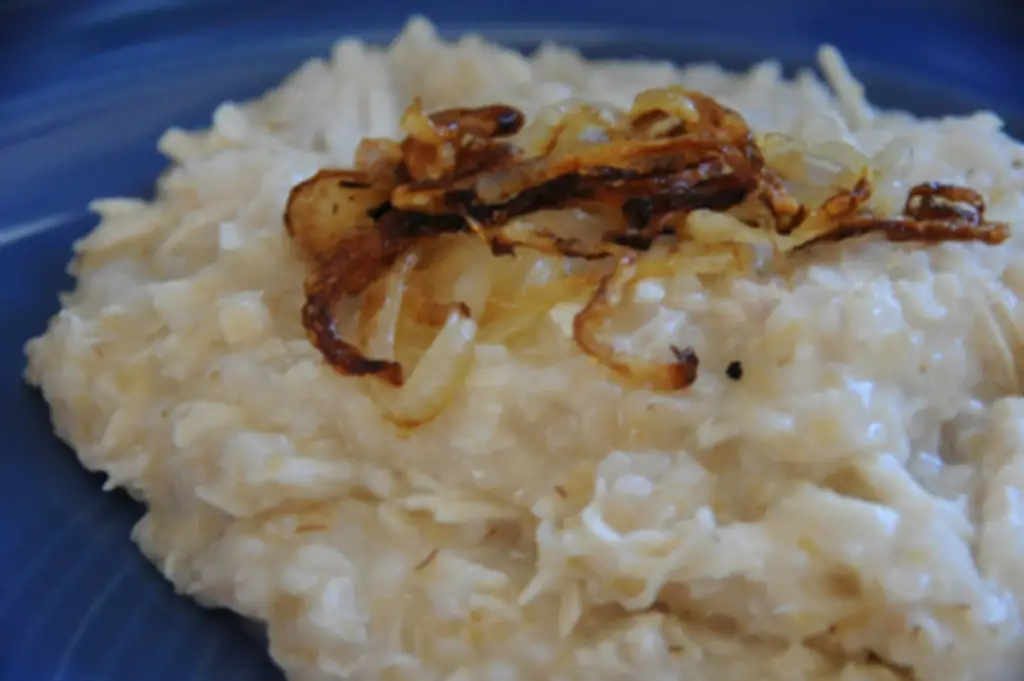
History of Boko Boko Harees
Boko Boko Harees is made with a combination of chicken breasts, bulgur wheat, onions, chicken giblets, ginger, turmeric, cardamom, sugar, ghee, and black pepper.
The dish is influenced by the Arab settlers who brought harees, a sort of porridge made from shredded meat and wheat to Eastern Africa hundreds of years ago.
To make Boko Boko Harees, you will need the following ingredients
- 2 cups of bulgur wheat, fine or medium grade
- 15 g of unsalted butter
- 1 onion, diced
- 250 g of chicken breast
- 2 tsp of ground turmeric
- Salt and pepper, to taste
- Water, as needed
- 2 tbsp of ghee or butter
- Sugar, to taste
- Chopped coriander, for garnish (optional)
The steps for making Boko Boko Harees are as follows
- Soak the bulgur wheat in enough water to cover it and set aside.
- In a large frying pan, melt the butter and sauté the onion until soft and golden.
- Remove from the pan and set aside.
- In the same pan, cook the chicken breast over medium-high heat until cooked through and slightly browned.
- Shred the chicken with two forks or chop it into small pieces.
- Return the onion to the pan along with the turmeric, salt, and pepper.
- Cook for a few minutes, stirring occasionally.
- Drain the bulgur wheat and add it to the pan.
- Pour in enough water to cover the bulgur wheat.
- Bring to a boil and then reduce the heat to a simmer.
- Cook for about 15 minutes, or until the bulgur wheat is soft and fluffy, stirring occasionally.
- Add more water if needed to prevent the mixture from drying out or sticking to the bottom of the pan.
Serving Boko Boko harees
- Transfer the Boko Boko Harees to a serving dish and make a well in the center.
- Melt the ghee or butter in a small saucepan and drizzle it over the Boko Boko Harees.
- Sprinkle sugar over the dish, according to your preference.
- Garnish with chopped coriander, if desired.
Enjoy your Boko Boko Harees with some fried onions and turmeric sauce, or any other accompaniments of your choice. 😋
Burundi National Dish – Red Kidney Beans in Palm Oil

While red kidney beans in palm oil may not be the official national dish of Burundi, it is a popular and traditional dish in East African cuisine, including Burundi. Let’s explore the history, ingredients, and a comprehensive recipe for this flavorful dish.
Burundi National Dish – Red Kidney Beans in Palm Oil History and Background
- Red kidney beans in palm oil is a dish that reflects the rich agricultural and culinary traditions of Burundi.
- It draws inspiration from indigenous ingredients and the cooking methods passed down through generations.
- The use of palm oil is a distinctive feature, adding a unique flavor to the dish.
Red Kidney Beans in Palm Oil Ingredients
- Red kidney beans: Dried beans that are soaked and cooked until tender.
- Palm oil: A key ingredient that gives the dish its characteristic color and flavor.
- Onions: Finely chopped for a savory base.
- Tomatoes: Chopped or crushed for acidity and freshness.
- Garlic: Minced for a robust flavor.
- Ginger: Grated for warmth and aroma.
- Green bell peppers: Sliced for a mild crunch.
- Salt: To taste.
- Water: For cooking and adjusting consistency.
- Optional: Chili peppers for heat, and spices like cumin or coriander for additional flavor.
Burundi National Dish – Red Kidney Beans in Palm Oil Recipe
Prepare the Red Kidney Beans
- Soak the dried red kidney beans overnight, then cook them until they are tender. Drain and set aside.
Sauté Onions and Aromatics
- In a large pan, heat palm oil over medium heat.
- Add finely chopped onions, minced garlic, and grated ginger. Sauté until the onions are translucent.
Add Tomatoes and Green Bell Peppers
- Incorporate chopped or crushed tomatoes and sliced green bell peppers into the pan.
- Cook until the vegetables are softened, and the mixture develops a thick consistency.
Introduce Red Kidney Beans
- Add the cooked red kidney beans to the pan, stirring gently to combine with the vegetable mixture.
Seasoning
- Season the dish with salt to taste.
- If you prefer a spicier dish, add chopped chili peppers or other spices according to your preference.
Simmer
- Allow the dish to simmer on low heat for about 15-20 minutes, letting the flavors meld.
Adjust Consistency
- If needed, add water gradually to achieve the desired consistency.
Serve
- Once the flavors have melded, and the dish has reached the desired consistency, it is ready to be served.
Garnish (Optional)
- Garnish with fresh herbs like cilantro or parsley for added freshness.
Enjoy the rich and flavorful red kidney beans in palm oil, a dish that captures the essence of Burundian and East African cuisine!
Burundi National Dish – Matoke

Burundi National Dish – Matoke – History and Background
- Matoke is a traditional dish in Burundi, as well as in other East African countries like Uganda, Rwanda, and parts of the Democratic Republic of Congo.
- It is a banana-based dish, where green bananas are the primary ingredient.
- The dish has roots in the indigenous cuisines of the region and has been a staple for centuries.
Matoke – Ingredients
- Green bananas (Matoke): The star ingredient, ensure they are green and not ripe.
- Cooking oil: Typically vegetable oil.
- Onions: Finely chopped for flavor.
- Garlic: Minced for a savory kick.
- Ginger: Adds a warm, aromatic flavor.
- Tomatoes: Chopped for a burst of freshness.
- Green bell peppers: Sliced for a mild crunch.
- Salt: To taste.
- Water: For boiling and adjusting the consistency.
- Optional: Chili peppers for heat, and groundnut paste for added richness.
Burundi National Dish – Matoke – Recipe
Prepare the Matoke
- Peel the green bananas and cut them into chunks.
Boil the Matoke
- Place the banana chunks in a pot of water and bring it to a boil.
- Cook until the bananas are tender but not mushy. This may take around 20-30 minutes.
Prepare the Sauce
- In a separate pan, heat cooking oil over medium heat.
- Add chopped onions, minced garlic, and grated ginger. Sauté until fragrant.
Add Vegetables
- Toss in the chopped tomatoes and sliced green bell peppers. Cook until the vegetables are softened.
Combine with Matoke
- Once the Matoke is cooked, drain any excess water.
- Add the boiled Matoke to the vegetable mixture and stir gently to combine.
Seasoning
- Season the dish with salt to taste.
- If you like it spicy, add chopped chili peppers.
Simmer
- Let the Matoke simmer on low heat for another 10-15 minutes, allowing the flavors to meld.
Optional Groundnut Paste
- For added richness, stir in groundnut paste. This is optional but adds a nutty flavor.
Burundi National Dish – Matoke – Serve
- Once everything is well combined and the flavors have melded, your Matoke is ready to be served.
Garnish (Optional)
- Garnish with fresh herbs like cilantro or parsley for a burst of color and added freshness.
Enjoy your Matoke, a delightful dish rich in East African flavors!
Burundian Cuisine – Umugati (Baguette with Fish)

Burundian Cuisine – Origins and Occasions
Umugati is a testimony to the European influence on Burundian cuisine. A fresh baguette stuffed with seasoned fish makes for a fulfilling lunch that is often enjoyed by workers or at family gatherings.
Burundian Cuisine – Ingredients for Umugati
- Fresh baguettes
- Whole small fish, cleaned and gutted
- Lemon juice
- Garlic cloves, minced
- Freshly ground black pepper
- Salt to taste
- Oil for frying
How to prepare Umugati
Marinate the fish in a mixture of lemon juice, garlic, salt, and pepper. Fry until golden and crisp. Slice the baguettes and stuff them with the fried fish.
Presentation and Serving
The umugati is best served fresh and warm. Slice the stuffed baguette into manageable pieces and serve them wrapped in paper for an authentic street-food vibe.
Matching Drinks
A chilled soft drink or a local banana beer would complement the umugati well, providing a refreshing contrast to the savory fish.
Burundian Cuisine – Ibiharage (Bean Stew with Sweet Potatoes)

Origins and Occasions
Ibiharage speaks to the agricultural heart of Burundi, where beans are a staple. This dish is a common main course at dinner, offering a comforting end to the day.
Ingredients for Ibiharage
- Red kidney beans, soaked overnight
- Sweet potatoes, peeled and cubed
- Onions, finely chopped
- Vegetable oil
- Salt and pepper to taste
- Water or vegetable broth
How to prepare Ibiharage
Cook the soaked beans until tender. In another pot, sauté onions, add sweet potatoes, and the cooked beans. Season and simmer until the sweet potatoes are tender and flavors meld.
Presentation and Serving
Serve the bean stew in a communal bowl, with diners scooping portions onto their plates. It’s traditionally accompanied by white rice or boiled plantains.
Matching Drinks
To balance the heartiness of the stew, a tangy tamarind juice or a simple glass of water would be fitting.
Burundian Cuisine – Ibihaza (Pumpkin with Beans)
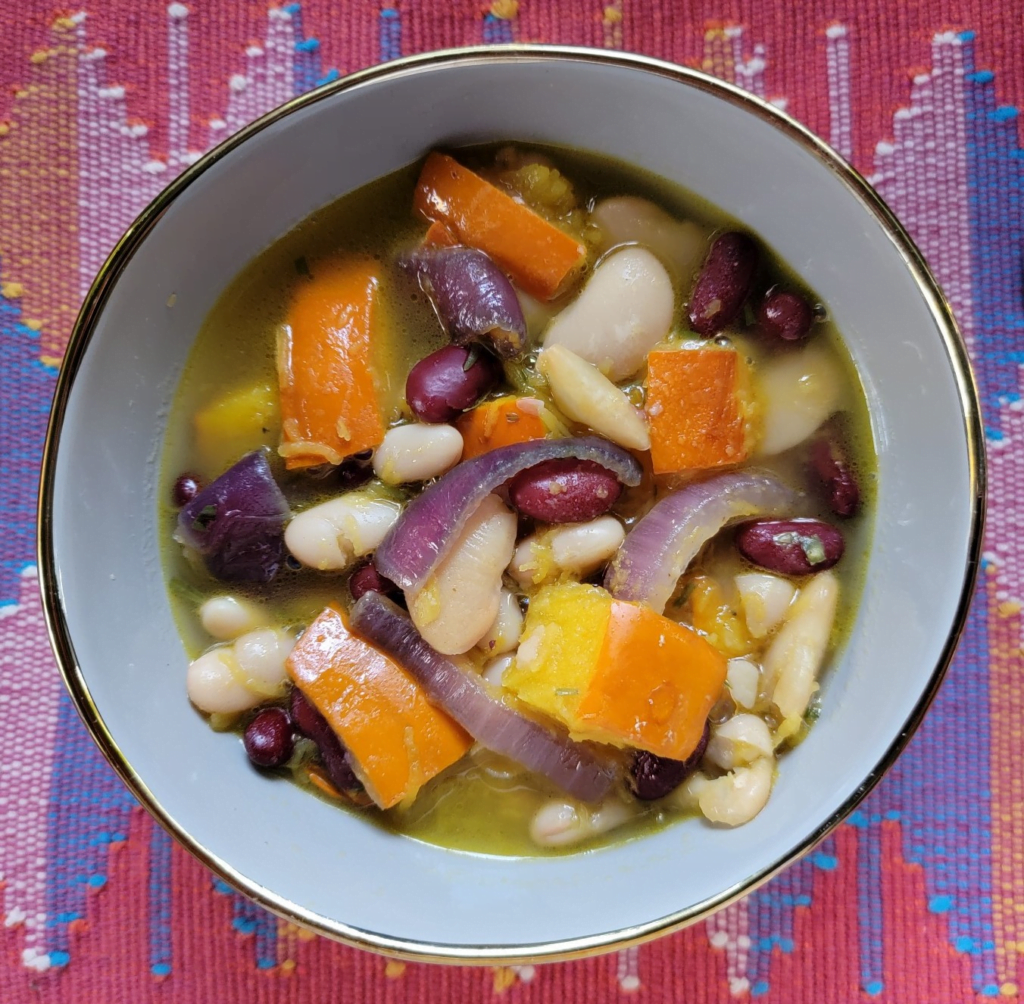
Origins and Occasions
Ibihaza is a traditional dish that is particularly popular during the harvest season when pumpkins are plentiful. It’s a festive dish, often served at celebrations.
Ingredients for Ibihaza
- Pumpkin, peeled and cubed
- Red kidney beans, soaked overnight
- Onions, finely chopped
- Palm oil
- Salt to taste
- Water or vegetable broth
How to prepare Ibihaza
Begin by cooking the beans until nearly tender. Add the pumpkin and continue to cook until both the pumpkin and beans are soft. Sauté onions in palm oil and mix into the beans and pumpkin.
Presentation and Serving
Ibihaza is traditionally served in a large bowl or platter, encouraging communal dining. Serve alongside ugali or steamed rice.
Matching Drinks
A creamy and sweet banana milkshake or a simple cup of Burundian tea would complement the dish nicely.
Burundian Cuisine – Sweet Potato Pudding

Origins and Occasions
Sweet potatoes are a versatile ingredient in Burundi, and this pudding is a simple yet delightful way to enjoy them, especially during festivities.
Ingredients for Sweet Potato Pudding
- Sweet potatoes, peeled and grated.
- Brown sugar or honey
- Coconut milk
- Cinnamon
- Nutmeg
How to prepare Sweet Potato Pudding
Combine grated sweet potatoes, sugar or honey, and coconut milk, seasoned with cinnamon and nutmeg. Bake until set and lightly caramelized on top.
Presentation and Serving
Serve the pudding warm in small bowls or plates, dusted with a little extra cinnamon or nutmeg for added spice.
Matching Drinks
A cup of spiced tea or a light coffee would provide a warm and comforting balance to the sweet pudding.
Burundian Cuisine – Banana Fritters

Origins and Occasions
Bananas are abundant in Burundi, and fritters are a favorite treat among children and adults alike, often enjoyed as a snack or dessert.
Ingredients for Banana Fritters
- Ripe bananas, mashed
- Wheat flour
- Sugar
- Egg, beaten
- Vanilla extract
- Oil for frying
How to prepare Banana Fritters
Mix the mashed bananas with flour, sugar, egg, and vanilla to form a batter. Drop spoonsful’s into hot oil and fry until golden. Drain on paper towels.
Presentation and Serving
Serve the fritters hot, dusted with powdered sugar or drizzled with a little honey.
Matching Drinks
A refreshing glass of milk or a hot chocolate drink would match the sweet and crispy fritters perfectly.
Conclusion
Burundian cuisine is a tapestry of flavors and traditions, each dish offering a story of the nation’s history, geography, and community. From staple starches and legumes to festive meats and sweet treats, the food of Burundi is a testament to the nation’s agricultural heritage and culinary ingenuity.
FAQ’s
What is the main characteristic of Burundian Food
Burundian food is known for its simplicity and use of local ingredients. Staple foods include beans, corn, and sweet potatoes, often accompanied by vegetables and meat.
Common dishes include isombe (cassava leaves with vegetables), mukeke (grilled fish), and ugali (a thick cornmeal porridge).
What are typical spices used in Burundian cuisine?
Common spices include garlic, onion, and chili, with a preference for fresh herbs over dried ones.
Is Burundian cuisine vegetarian-friendly?
Yes, with an abundance of beans, legumes, and vegetables, there are plenty of vegetarian options in Burundian cuisine.
What is the most popular drink in Burundi?
Homemade banana beer and freshly brewed tea are among the most popular drinks in Burundi.
Are there any special eating customs in Burundi?
Meals are typically shared from a communal bowl, reflecting the strong social bonds within Burundian culture.
How important is agriculture to Burundian food?
Agriculture is central to Burundian cuisine, with the majority of dishes featuring home-grown ingredients.
What is the national dish of Burundi?
There are three recipes that are considered National dishes of Burundi
Red Kidney Beans in Palm Oil is often considered a national dish, commonly eaten throughout the country.
Matoke – It is a banana-based dish, where green bananas are the primary ingredients.
Boko Boko Harees is made with a combination of chicken breasts, bulgur wheat, onions, chicken giblets, ginger, turmeric, cardamom, sugar, ghee, and black pepper.

